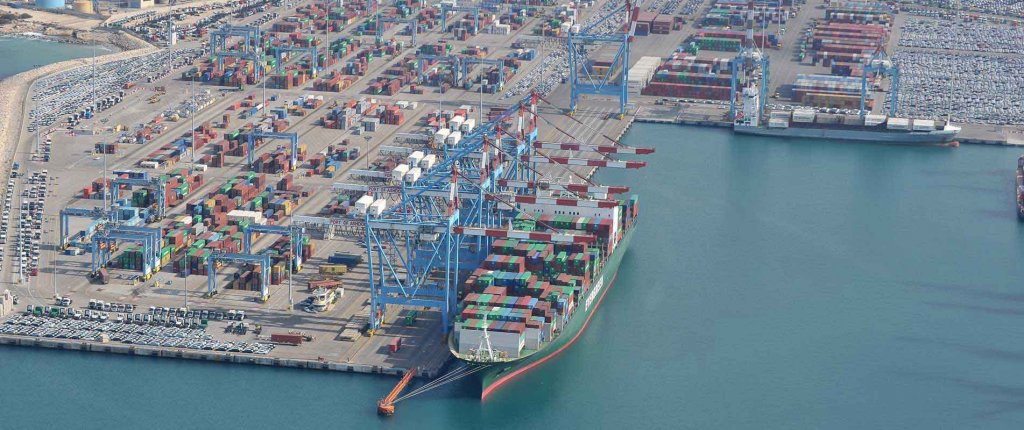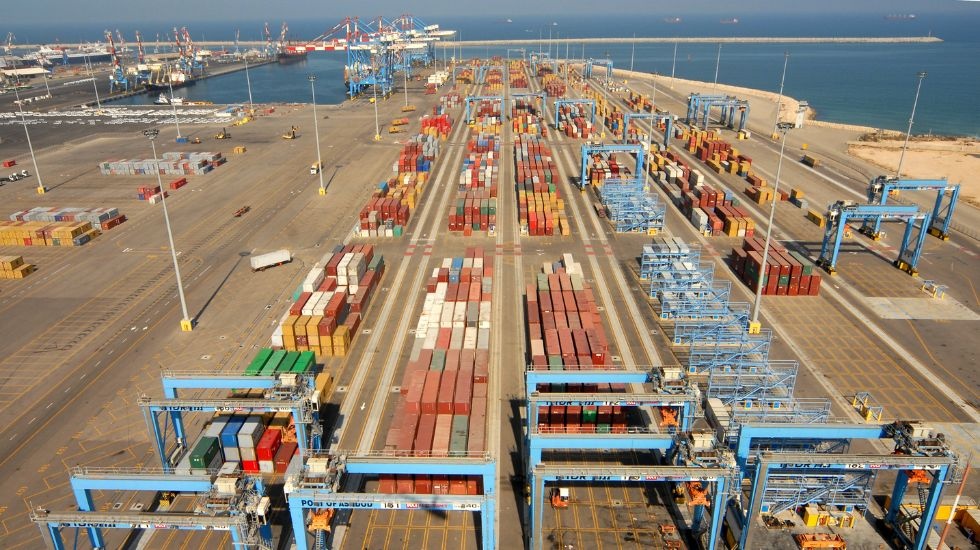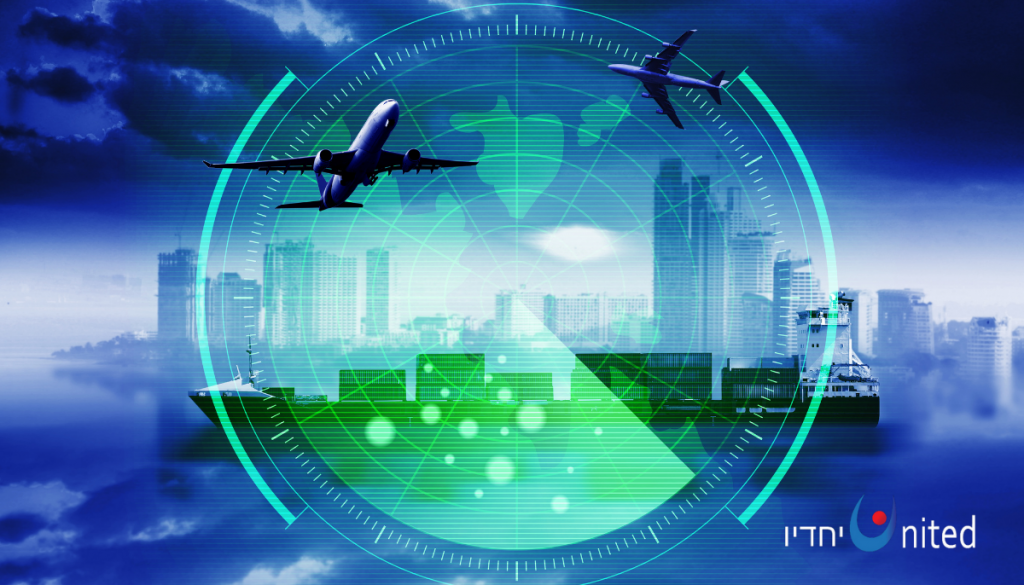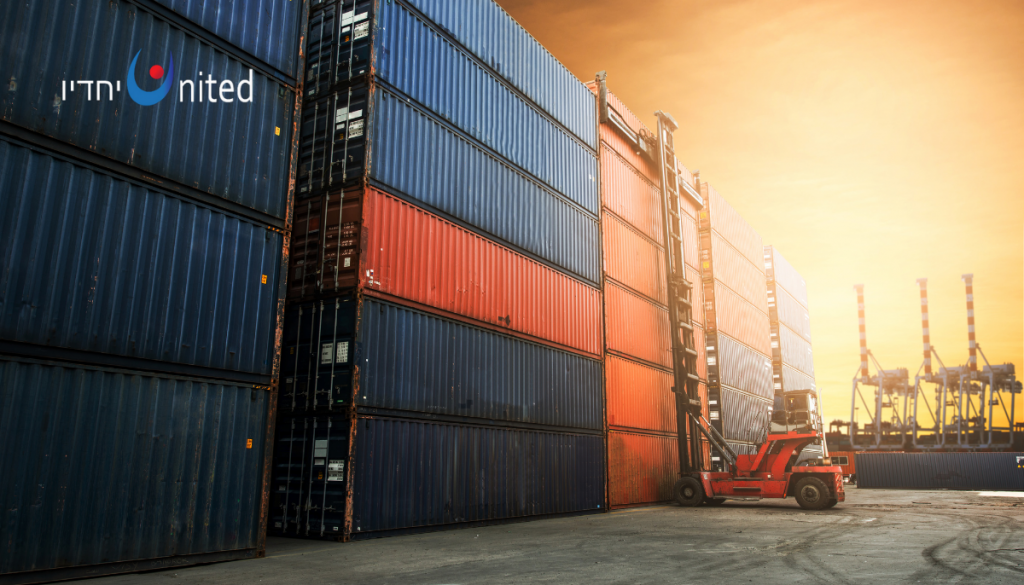יום ראשון, 13 במרץ 2022
חוקי או לא חוקי
זכות העיכבון הינה זכות על פי דין, וכוונתה לייעל את הליך כריתתה של עסקה ולאפשר מסחר מהיר, דינמי ויעיל.
אך מה קורה כאשר סוכן האנייה מסרב למסור לסוכן המכס פקודת מסירה למטען של יבואן בשל חוב של סוכן המכס לסוכן האנייה מעסקה קודמת?
עו״ד גיל נדל על הנושא המרתק
בפרקטיקה של היבוא והיצוא ניתן להיתקל לא אחת במוביל ימי (או סוכנו) שמעכב סחורות ומסרב להנפיק פקודת מסירה בשל חובות כספיים. למשל, כאשר השולח לא שילם את דמי ההובלה של אותו משלוח, ועקב כך סוכן האנייה מסרב להנפיק פקודת מסירה. או, במקרה אחר, כאשר השולח חייב כסף בשל משלוחים קודמים, וסוכן האנייה תופס משלוח נוכחי (ששולמו עבורו דמי ההובלה) כ״בן ערובה״. לעיתים מעורב בעניין גם סוכן המכס: לדוגמא, כאשר סוכן האנייה מסרב למסור לסוכן המכס פקודת מסירה למטען של יבואן בשל חוב של סוכן המכס לסוכן האנייה מעסקה קודמת, או – במקרה חריף יותר – כאשר סוכן האנייה מסרב למסור לסוכן המכס פקודת מסירה למטען של יבואן א׳ בשל חוב כספי שיש ליבואן ב׳ כלפי המוביל (יבואן א׳ ויבואן ב׳ עובדים באמצעות אותו סוכן מכס, וכך מנסה סוכן האנייה לקשור ביניהם). זו, כאמור, התנהגות שניתן להיתקל בה בפרקטיקה, אולם אין זה אומר שזוהי התנהגות חוקית. אז מה החוק אומר בעניין זה?
זכות העיכבון הינה זכות על פי דין להפעלת סעד עצמי באופן המאפשר לבעל חוב להחזיק בנכס של חייב כערובה לתשלום החוב עד שיסולק, ללא כל צורך בפנייה לבית המשפט. זכות העיכבון בעצם נועדה לענות על צרכי המסחר של נותני שירותים וספקים שלא ניתן לדרוש מהם ׳לרוץ׳ בכל מתן שירות אל רשם המשכונות כדי לרשום משכון על נכסי החייב, ושעלולים להימנע מעשיית עסקאות בלא שיובטחו להם זכויותיהם מול החייב.
בכך, בעצם, מייעלת זכות העיכבון את הליך כריתתה של עסקה ומאפשרת מסחר מהיר, דינמי ויעיל.
זכות העיכבון יכולה להיווצר הן מכוח חוק והן מכוח הסכם בין הצדדים. ההסדר החקיקתי הכללי בדבר זכות העיכבון מקורו בחוק המטלטלין הקובע באופן כללי את דרך הפעלת הזכות, מהותה והיקפה. סעיף 11(א) לחוק המטלטלין קובע את זכות העיכבון מכוח החוק: ״עיכבון הוא זכות על פי דין לעכב נכס מטלטלין, כערובה לחיוב עד שיסולק החוב״. עם זאת, על מנת שלאדם תהא עילת שימוש בזכות העיכבון מכוח החוק, עליו להיכנס בשעריו של אחד החוקים הספציפיים המורים על זכות עיכבון ייחודית. כך, לדוגמה, קיימות הוראות עיכבון ספציפיות בסעיף 31 לחוק המכר, סעיף 5 לחוק הקבלנות, סעיף 12 לחוק השליחות, סעיף 8(ג) לחוק הנאמנות, סעיף 19 לחוק החוזים (תרופות) וכו׳.
פורסם באתר – www.port2port.co.il
יום ראשון, 6 במרץ 2022
תעלת סואץ: עלייה נוספת בתעריפי אגרות המעבר

החל מה-1 במרץ מתייקרות אגרות המעבר בתעלת סואץ בשיעור של עד 10%. נזכיר כי ב-1 בפברואר כבר התייקרו האגרות בכ-6% לכל כלי השיט העוברים בתעלה, למעט ספינות נוסעים ומכליות גז.
החל מהיום (1/3) מתייקרות אגרות המעבר בתעלת סואץ בשיעור של עד 10%. רשות תעלת סואץ הודיעה על ההעלאה בשבת בלילה. נזכיר כי ב-1 בפברואר כבר התייקרו האגרות בכ-6% לכל כלי השיט העוברים בתעלה, למעט ספינות נוסעים ומכליות גז.
הרשות הסבירה שההחלטה התקבלה ״על סמך הצמיחה המרשימה בסחר העולמי, השיפור בענף הספנות, פיתוח מסלולי הניווט (בתעלה) ושיפור שירותי המעבר בתעלת סואץ״. מחירי האגרות שונים על פי סוג הספינות. כך למשל מכליות הנפט ומוצריו יצטרכו לשלם עוד 5% מהיום כדי לעבור בתעלה. על מכליות המובילות גז וכן על אניות המובילות מוצרים כימיים לשלם עוד 10% כדי לעבור בתעלה.
במצרים מעריכים כי ייקור האגרות לא ישפיע על התנועה בתעלה בייחוד בתקופה הנוכחית כשלכלי השיט אין ממש אלטרנטיבה עקב עליית מחירי הדלקים.
אתמול (2/3) החלה ״רשות תעלת סואץ״ המצרית ליישם את החלטתה לייקר את אגרות המעבר לכל סוגי הספינות העוברות בתעלה ב-6%, ואת למעט ספינות תיירים ומכליות גז נוזלי. בתחילת ינואר החלה הרשות לצמצם ההנחות שנעו בין 5% ל-10% שנתנה לקווי הספנות המשתמשים בנתיב השיט הבינלאומי.
״רשות התעלה״ נימקה את החלטתה להפחית את ההנחות עליהן הכריזה במהלך משבר הקורונה בכך שהיא ״מעוניינת להפיק תועלת מהגידול בתנועת השיט העולמית, במיוחד עבור ספינות מכולות, לאחר פתיחת הנמלים מחדש וחידוש העבודות בהם במלוא התפוקה״. תנועת הגז הנוזלי בתעלת סואץ מהווה כ-4.5% מסך תנועת הסחר העוברת בתעלה. במצרים הסבירו שהפטור לספינות הקרוז מדמי מעבר מוגדלים תואם מצבה של התיירות העולמית, שנפגעה קשות במהלך השנתיים האחרונות עקב התפשטות הקורונה בעולם.
במקביל, אוסמה רביע, ראש רשות התעלה אמר אתמול שבמהלך חודש ינואר 2021 הגיעה תנועת הספינות בתעלה ל-1,774, עלייה של 11% לעומת השנה שעברה. רביע הוסיף בראיון לתכנית טלוויזיה שהתעלה השיגה בחודש ינואר הכנסה בשווי של 544 מיליון דולר, עלייה של 10% לעומת השנה שעברה.
פורסם באתר – www.port2port.co.il
יום רביעי, 2 במרץ 2022
יחדיו שילוח בינלאומי ועמילות מכס בע"מ
יום שלישי, 1 במרץ 2022
Ashdod Port completed a significant phase in the 500 million shekel project to upgrade Platform 21
Ashdod Port is presently completing one of its more complex operational projects after extensive renovations on the western side of Platform 21.
At the end of the process grain ships will be able to unload on the western side the platform.
This is part of a significant strategic process, involving an investment of about half a billion shekels in preparation for the upcoming competition, to upgrade Platform 21 and make it deeper so that megaships will be able to dock there.
The total length of Platform 21 is 850 meters. This will allow large container ships, with a length of about 400 meters and a capacity of 18 thousand containers, to dock at the port. The upgrade also includes making the eastern side of the platform deeper – about 17.5 meters – and reinforcing it so that it can support cranes weighing 130 tons; with the western side reaching a depth of about 16 meters – suitable for large grain ships.
אתר נמל אשדוד: דו״ח מתעדכן בזמן אמת של תפוקות אניות ומנופים למכולות
הנתונים החדשים זמינים לכלל האוכלוסייה ומספקים את כל המידע אודות
פריקה וטעינה של מכולות בנמל, כולל ממוצעי ביצוע לכל אנייה ולכל עגורן.
שוקי ז׳אנה, מנכ״ל חברת נמל אשדוד: אנו רואים חשיבות עליונה בהגברת
השקיפות. בעתיד נאפשר יכולת זו גם למטען כללי.
נמל אשדוד הוסיף עמוד חדש לאתר האינטרנט של הנמל, בעמוד זה ניתן יהיה למצוא דו״ח תפוקות אניות ומנופים למכולות המתעדכן בזמן אמת. כל המידע הרלוונטי אודות פריקה וטעינה של מכולות בנמל אשדוד, כולל ממוצעי ביצוע לכל אוניה ולכל עגורן.
הדו״ח פתוח לכלל האוכלוסייה ומאפשר לציבור הרחב לעקוב בזמן אמת בנתוני הפריקה והטעינה בנמל אשדוד. בנוסף, עבור כל אנייה הנכנסת לנמל אשדוד ניתן יהיה לקבל נתונים הכוללים את סוכן האנייה, קו האניות במסגרתו האנייה פועלת, מועד קשירת האנייה לרציף, מועד תחילת העבודה על האנייה. כמו כן, ניתן לעקוב אחר סך המכולות המתוכננות לפריקה וטעינה, מספר המכולות שנטענו ונפרקו בפועל, אחוז העבודה שהושלמה וקצב הפעולות הממוצע לשעת אנייה ולמשמרת.
הדו״ח לא מספק מידע רק על האניות, אלא גם על העגורנים העובדים על האניות. בכל דו״ח ניתן יהיה למצוא פירוט על קצב עבודת העגורן, מספר המכולות שפרק כל עגורן במהלך המשמרת, וכן מתי החל וסיים לעבוד. שירות נוסף הניתן בדו״ח החדש הינו תצורת מבנה המחסנים בבטן האנייה ונתונים נוספים עבור כל מחסן בנפרד.
לקישור לחצו על התמונה
יום ראשון, 27 בפברואר 2022
How trade works today
When we think about international trade, we traditionally think about a person or company producing all elements of a product in their home country and then exporting a final product to a consumer in a different country.
This type of trade, however, only represents about 30% of goods and services trade today; the majority of trade (70%) is actually in intermediate parts, components, and services that form segments of global value chains (GVCs). The process of producing goods is often spilt across countries, with different elements carried out wherever the necessary skills and materials are available at competitive cost and quality.
For example, a T-Shirt may be manufactured in Viet Nam using fabric imported from the United States, and then exported to Canada to sell in local retail markets. At the other end of the technology spectrum, producing a smart phone requires many complex components sourced from all over the world, including for example, computer code from France, silion chips from Singapore, precious metals from Bolivia, and graphic design from the United States. While the final product may be assembled in China and then shipped to consumers all around the world, this example reveals that many products we think of today as being made “somewhere” are in fact the result of efforts by firms and individuals in many countries.
Traditional trade statistics do not capture this reality, which is why the OECD launched an initiative to measure trade in “value added” (TiVA) terms, deepening our understanding of how trade actually works. Using TiVA, we can better identify how much value each country and industry adds to a final product along the global supply chain. This approach provides a much more accurate picture of trade balances between countries and the contribution of trade to income and employment. Taking the example of the smart phone, traditional trade statistics would attribute 100% of a final Apple iPhone assembled in China to Chinese exports, whereas a value-added approach shows that China actually only retains around 4% of the total value of the iPhone – the rest of the value is attributed to other countries that provide inputs all along the supply chain.
This new sharing of production across countries has enabled many more countries to participate in global trade, with developing countries increasing their share of global exports and imports. While the new environment for trade creates new opportunities, it also increases the costs of trade barriers.
When goods and components cross borders many times in GVCs, even small tariffs can add up, and the costs of inefficient border procedures are multiplied. Trade facilitation –the transparent, predictable and straightforward procedures that expedite the movement of goods across borders – is becoming ever more important, and is especially critical for trade in perishable agricultural products or high-tech manufacturing components, both of which are highly sensitive to delays. Trade facilitation is becoming even more important in the digital era.
TiVA data also highlight how important services are to global trade. Services represent more than 50% of total global exports, and over 30% of manufactured goods exports and around 25% of agri-food exports in value added terms. This means that efficient services sectors are not just important in their own right – services contribute to as much as 80% of GDP in some countries – but they are also essential to a country’s competitiveness in other sectors as well.
Even though services generate more than two-thirds of global GDP, employ the most workers in major economies, create more new jobs than any other sector, and are critical to competitiveness, obstacles to trade in services remain pervasive. Regulatory reforms and liberalisation of trade and investment in services are needed to enhance competition and increase the productivity and quality of services.
Indeed, international trade can be strongly impacted by non-tariff barriers that originate from domestic regulations, or from limitations to foreign investment. The challenge is to meet policy objectives in ways that maintain the gains from trade.
Digital techonologies and related new business models are also now changing the way we trade. Digitalisation reduces the cost of engaging in international trade, connects a greater number of businesses and consumers globally, helps diffuse ideas and technologies, and facilitates the co-ordination of GVCs.
But even though it has never been easier to engage in trade, the complexity of international trade transactions has increased dramatically, posing new challenges for firms, individuals and governments. Emerging technologies like 3D printing are poised to further change how we trade in the future.
In this fast-evolving environment, challenges involve ensuring that the opportunities and benefits from trade can be realised and shared more inclusively. How countries trade with each other matters.
Rules of the road: the international trading system
Today’s multilateral trading sytem can be traced to the aftermath of World War II, when the desire for peace led governments to establish mechanisms for deeper economic co-operation. The General Agreement on Tariffs and Trade (GATT) was signed by 23 founding members in 1948.
Over the years, successive rounds of multilateral negotiations further reduced tariffs and new members joined the GATT. The Uruguay Round of trade negotiations concluded in 1993, establishing the World Trade Organization (WTO) to replace the GATT as a governing structure for global trade. The birth of the WTO in 1995 established new procedures for settling disputes and marked the first time global rules were set for agriculture, trade in services, and intellectual property.
WTO members launched the Doha Development Agenda (DDA) in 2001 with a goal of advancing trade rules and market opening, notably in agriculture, non-agriculture market access, and services. Following more than a decade of impasse, in 2013, WTO members reached agreement on the Trade Facilitation Agreement (TFA).
Notwithstanding this slow progress, the multilateral trading system remains critical to global prosperity. WTO rules helped to prevent a slide into a 1930s-style trade war that would have greatly exacerbated the global economic crisis a decade ago. Changes in the global economy and the slowdown in trade call for strengthening the WTO. There are a number of ongoing efforts to strengthen and modernise the WTO, in particular with respect to its monitoring and surveillance functions, its dispute settlement function, and negotiations to ensure that firms in all countries are competing on a level playing field.
Today, the WTO still sets the basic rules of the game for cross-border trade in over 160 countries, and is complemented by a growing number of bilateral and regional trade agreements (RTAs) that tend to include deeper and wider commitments to integrate markets. In fact, more than 290 RTAs notified to the WTO are in force today (figure), and more than 30 new agreements are under negotiation.
Although RTAs operate alongside global multilateral agreements under the WTO, many are developing in ways that go beyond existing WTO multilateral rules, and have created a “spaghetti bowl” of preferential agreements. Areas covered by many new RTAs – from investment, to the movement of capital and persons, to competition, to e-commerce – are essential policy issues that must be addressed in today’s more interconnected markets. To the extent that they go beyond commitments made in the WTO and remain open to additional participation by countries committed to meeting their standards, RTAs can complement the multilateral trading system.
Governments have put a lot of effort into establishing and maintaining a global trading rulebook over the past 70 years; progressively opening markets and deepening economic integration. Learn more about why open markets matter to better understand their motivation.
משלחים לבריטניה משלמים 1,000 דולר יותר למכולה
טרום מגיפת הקורונה תעריפי ההובלה מאסיה לצפון אירופה ובריטניה היו
זהים אולם כעת המשלחים לבריטניה משלמים פרמיה של 1,000 דולר לפחות לכל
מכולת FEU.
33 ק״מ בלבד הם כל מה שמפריד בין הממלכה המאוחדת לשאר אירופה בחלק הצר ביותר של תעלת למאנש, אך לאחר הברקזיט, בשילוב עם הבעיות התפעוליות שהתעוררו עם פרוץ מגיפת הקורונה, מרחק זה עולה כעת למשלחים הבריטיים כמעט 1,000 דולר יותר לכל FEU שלהם שמגיע מאסיה לעומת שכניהם ביבשת.
אם מסתכלים על העבר הקרוב, לפני המגיפה, תעריפי ההובלה לצפון אירופה ולבריטניה היו זהים, אך נתונים חדשים מפלטפורמת השוואת תעריפי הובלה באוקיינוס Xeneta מראים את הפרמיה הענקית שחברות מבריטניה צריכות לשלם, הן עבור חוזים לטווח קצר והן לטווח ארוך.
נכון לאמצע פברואר, תעריפי השוק ל״ספוט״ עולים בממוצע 15,350 דולר כדי להביא מכולה מאסיה לבריטניה, נתון שלא היה מתחת ל-15,000 דולר מאז ספטמבר אשתקד.
יחד עם זאת, אם המכולה שלכם מיועדת לנמל דרומית לתעלת למאנש אתם תחסכו יותר מ-950 דולר למכולה, שכן תעריפי הספוט מאסיה לצפון אירופה מעולם לא עברו את רף 15,000 הדולר ל-FEU .
בשוק התעריפים לטווח הארוך, הפרמיה ליבוא לבריטניה קפצה במידה ניכרת כאשר התעריפים ארוכי הטווח לבריטניה עלו בקרוב ל-2,000 דולר ל-FEU בשנה החדשה, בעוד אלו מאסיה לצפון אירופה עלו רק ב-200 דולר, נתוני Xeneta מראים.
התעריפים עבור חוזים ארוכי טווח שנחתמו בשלושת החודשים האחרונים עומדים על 11,359 דולר ל-FEU מאסיה לבריטניה ו-9,408 דולר למכולות שמגיעות לצפון אירופה.
נציין כי בחודש שעבר, איגוד המטענים הבינלאומי הבריטי (BIFA) שלח מכתב לממשלת בריטניה וביקש ממנה לחקור את מצב התחרות בשוק שילוח המכולות הנוכחי.
יום רביעי, 16 בפברואר 2022
נמל אשדוד: אניות נפרקות בחלקו המזרחי של רציף 21
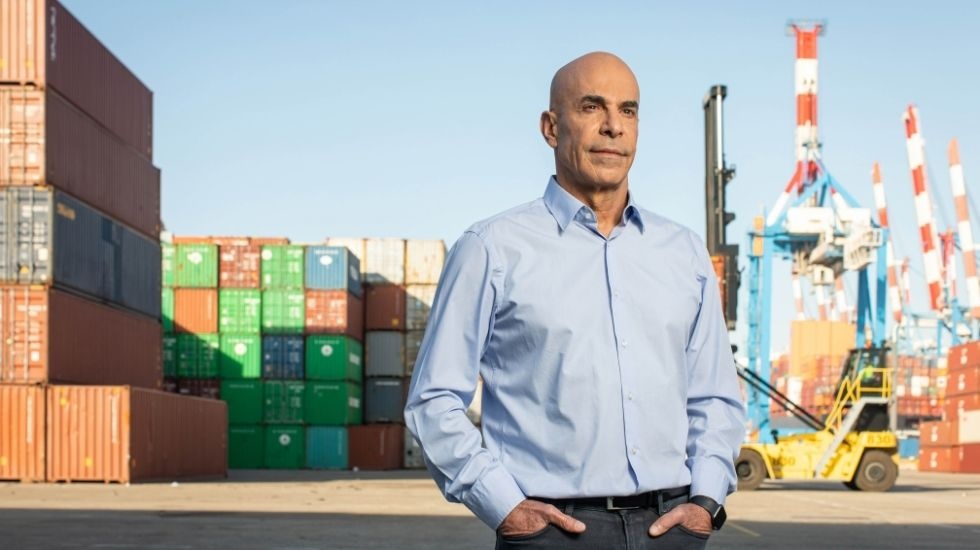
נמל אשדוד האיץ סיום עבודות השדרוג בחלקו המזרחי של רציף 21 באורך שך כ-320 מטר, ומאפשר כעת פריקת אניות כחלק מהתמודדות עם העומס.
יום ראשון, 13 בפברואר 2022
נמל חיפה מעדכן כלפי מעלה את תחזית המטענים לשנת 2022
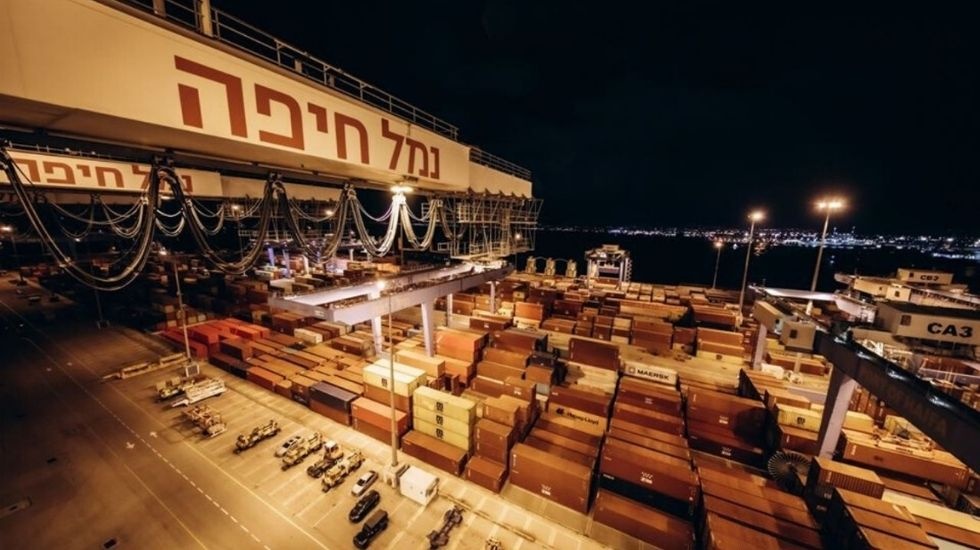
על פי הערכות מחודשות בנמל חיפה הצפי הוא כי כמות המכולות שתעבור בנמל בפועל בשנת 2022 גבוהה בלמעלה מ-125 אלף מכולות מהתכנון המקורי. בכוונת חברת הנמל לקלוט 50 עובדים נוספים ולהאריך את העסקתם של 40 עובדים זמניים שכבר נקלטו.
יום רביעי, 9 בפברואר 2022
הסכסוך בנמלים: בית הדין לעבודה ישוב ויתכנס באפריל

סגן נשיאת בית הדין הארצי לעבודה, השופט אילן איטח, הודיע כי ב-10 באפריל יתקיים דיון בהליך המאוחד העיקרי. בית הדין הארצי לעבודה נעתר לבקשת התאחדות התעשיינים ואיגוד לשכות המסחר והוציא צו מניעה נגד סכסוך העבודה שהכריזה ההסתדרות
יום ראשון, 6 בפברואר 2022
מדד פרייטוס: עלייה של 20% בתעריפי ההובלה האווירית מאירופה לאסיה

תעריפי ההובלה הימית בין אסיה והחוף המערבי של ארה״ב ירדו ב-2% ל-$15,218/FEU, וזאת באופן שונה מהמתרחש לפני ראש השנה הסיני. שיעור זה גבוה ב-169% מהתקופה המקבילה אשתקד.
Israel Economic Snapshot

Economic Forecast Summary (December 2021)
Economic activity rebounded strongly in 2021 and GDP is projected to grow robustly by 6.3% in 2021, 4.9% in 2022 and 4% in 2023. The progressing booster vaccination campaign, a gradually recovering labour market and fading uncertainty will support domestic demand. Strong growth of high-tech services exports will continue. The recovery could be slower if the health situation deteriorates again, or the increase in inflation is stronger or more persistent than assumed in the projections. Growth could be stronger if accumulated savings are withdrawn more quickly.
[dflip id="5953" ][/dflip]
More related articles…
יום רביעי, 2 בפברואר 2022
תעלת סואץ: התייקרות אגרות המעבר נכנס לתוקף

בתחילת ינואר החלה הרשות לצמצם ההנחות שנעו בין 5% ל-10% שנתנה לקווי הספנות המשתמשים בנתיב השיט הבינלאומי. כעת אגרות המעבר מתייקרות ב-6% בממוצע.



